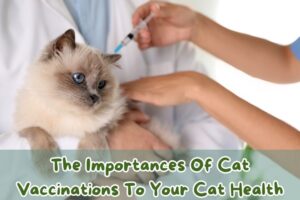Cats are notorious for being independent creatures, but even they rely on us to meet their basic needs. One crucial need is staying hydrated, and knowing how much water your cat requires is essential for their well-being. This article dives deep into how much water cat needs, exploring how much water your cat needs based on various factors, signs of dehydration to watch out for, and clever tricks to entice your picky kitty to drink up. So, quench your thirst for knowledge and ensure your furry friend stays happy and healthy with the purrfect hydration routine!
How much water cat needs per day
Let’s see how much water your feline requires based on their age.
How much water cat needs for adult cat?
An adult cat typically needs around 50-70 ml of water per kilogram of body weight per day. So, a 4kg cat would need 200-280 ml of water daily.
Factors affecting water intake:
- Diet: Cats on dry food diets need more water than those on wet food, as wet food already contains around 70-80% moisture.
- Activity level: More active cats need more water to replenish lost fluids.
- Climate: Cats in hot or humid environments need more water to stay cool.
- Health: Cats with certain health conditions, like kidney disease, may require more water.
How much water cat needs for kitten
- Kittens up to 3 months old: 70 ml per day
- 6-month-old kittens: 135 ml per day
- General guideline: As kittens grow, their water needs increase until they reach adulthood. However, similar to adult cats, their diet, activity level, and health can influence their individual water requirements.

How much water cat needs per day
Considers their usual behavior and water needs
While your cat’s individual water intake can vary based on factors like diet, activity level, and climate, here are some red flags to watch out for when it comes to your cat’s drinking behavior:
Sudden increase in water intake
If your cat starts drinking significantly more water than usual (more than the recommended amount based on their weight and factors mentioned above about how much water cat needs), it could indicate underlying health issues like:
- Kidney disease: Increased thirst is a common symptom of early-stage kidney disease, as damaged kidneys lose their ability to retain water.
- Diabetes: Diabetic cats often drink more water due to high blood sugar levels causing increased thirst.
- Hyperthyroidism: This condition can also lead to increased thirst and appetite.
- Liver disease: In some cases, liver disease can cause increased thirst.
- Urinary tract infection (UTI): UTIs can make urination painful, leading cats to drink more in an attempt to dilute the urine and relieve discomfort.
Sudden decrease in water intake
Not drinking enough water can also be concerning, indicating dehydration or potentially more serious problems like:
- Dental problems: Painful teeth or gums can make it difficult for cats to drink comfortably.
- Nausea: Cats experiencing nausea may be less inclined to drink.
- Upper respiratory infections: Difficulty breathing can make drinking more challenging.
- Kidney disease: In advanced stages, kidney disease can actually lead to decreased thirst due to a buildup of toxins in the bloodstream.

Sudden decrease in water intake
Other concerning signs alongside changes in water intake
- Changes in urination: Pay attention to your cat’s litter box habits. Frequent urination despite increased water intake could indicate diabetes or a UTI. Less frequent urination or concentrated urine can be signs of dehydration or kidney issues.
- Decreased energy or lethargy: This could indicate various underlying health problems.
- Loss of appetite: This can be a symptom of many different illnesses.
- Vomiting or diarrhea: These can lead to dehydration if not addressed.
- Weight loss: This can be a sign of various health problems, including chronic dehydration.
If you notice any of these concerning signs alongside changes in your cat’s water intake, especially if their intake deviates significantly from how much water cat needs, it’s crucial to schedule a visit with your veterinarian as soon as possible. Remember, the amount of water a cat needs depends on factors like weight, activity level, and diet, but generally falls between 3.5-4.5 ounces per 5 pounds of body weight daily. Early diagnosis and treatment are vital for managing many of the underlying conditions that can affect your cat’s drinking behavior.
Remember, even if your cat doesn’t exhibit any concerning signs, observing their water intake habits is essential for maintaining their overall health. By knowing their baseline drinking patterns and recognizing any significant changes, you can catch potential problems early and ensure your feline friend stays happy and hydrated.

Other concerning signs alongside changes in water intake
How to get your cat to drink more?
Encouraging your cat to drink more water can be challenging, but fret not! Here are some effective strategies to entice your feline friend to stay hydrated:
Variety is key:
- Multiple bowls: Place several water bowls in quiet locations around the house, away from food and litter boxes. Experiment with different materials like ceramic, stainless steel, or glass, as some cats prefer specific textures.
- Running water: Many cats are drawn to moving water. Consider a water fountain that keeps the water aerated and circulating, appealing to their hunting instincts.
- Flavoring (cautiously): With your vet’s approval, add a tiny amount of tuna juice, low-sodium chicken broth, or water from canned cat food to the water for a temporary flavor boost. Start with extreme dilution and monitor their reaction.
Temperature matters:
- Room temperature: Keep the water at room temperature, as cats often avoid chilled water.
- Ice cubes: Some cats enjoy lapping up water droplets from melting ice cubes, especially on hot days.
Dietary adjustments:
- Wet food: Incorporate wet food into their diet if your vet approves. Its high moisture content naturally increases their water intake.
- Broth enrichment: Occasionally offer small portions of unsalted, cat-safe broths as a treat and hydration source.
Make it fun and engaging:
- Dip your finger: Mimic mama cat by dipping your clean finger in the water and letting them lick it off, especially when kittens.
- Treat dispenser fountain: Combine a water fountain with a treat dispenser that rewards them for drinking, making it interactive and fun.
Other tips:
- Cleanliness: Wash water bowls daily with mild soap and water to maintain freshness.
- Stress reduction: Minimize stress factors like loud noises or new pets, as anxiety can affect drinking behavior.
- Regular vet checkups: Schedule regular checkups with your veterinarian to monitor your cat’s overall health and address any underlying concerns affecting their water intake.
Remember, consistency is key. By patiently trying different strategies and monitoring your cat’s response, you can find the best approach to keep them happily hydrated!





